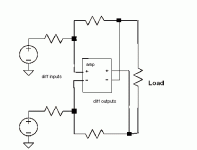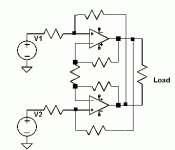Nelson Pass said:Since TI has pointedly ignored my offer of license, my
attorney is evaluating whether it's worth the effort to
chase them or not.
I got the feeling they'd probably start by fighting to throw the patent out and you'd lose, realistically speaking.
grataku said:I got the feeling they'd probably start by fighting to throw the patent out and you'd lose, realistically speaking.
Maybe, Maybe not. More likely they would weigh the costs of
legal action and the possibility that they would be picking up
my costs versus a paltry license fee.
They would also weigh the probability that I would spend the
money, and if they did any research they would discover that
we have spent as much as $500,000 on legal action before -
and prevailed.
Invalidating a patent would be very expensive for them to try,
and I don't think they could recover their costs.
Also, you discount the sympathy that the little guy often gets
from the courts when battling behemoths.
All told though, legal action is unpleasant business, and I
personally haven't ever seen anybody go through it with a
smile, even when they win.
pass:/ likes to win anyway.
Nelson Pass said:
All told though, legal action is unpleasant business, and I
personally haven't ever seen anybody go through it with a
smile, even when they win.
pass:/ likes to win anyway.
Not as unpleasant as buying a house in NJ. I am closing in a few days and I am starting to wish I had a "family" to help me look after my interest, if you know what I mean...😉
Since TI has pointedly ignored my offer of license, my attorney is evaluating whether it's worth the effort to chase them or not.
Dear Nelson, may I ask you
--does USPat 05376899 cover the amplifier with balanced inputs and balanced outputs, as shown?
--You wrote that it will cover two CFB amps connected as bridge http://www.diyaudio.com/forums/attachment.php?s=&postid=387359
But will your patent cover this circuit if R1=0 (no coupling resistor at all)?
Quote: “An amplifying circuit having identical inverted folded-cascode amplifier stages coupled together through a coupling resistor at the positive terminals of the respective stages”.
does USPat 05376899 cover the amplifier with balanced inputs and balanced outputs, as shown?
Attachments
cost me over $60K to recover a $250,000 receivable -- and the time involved !!!!!!!!!!!!!!! (and really, terminally ****ed off the client, but we had to pull our engineers in the middle of a project which made it bad for everyone.)Nelson Pass said:
They would also weigh the probability that I would spend the
money, and if they did any research they would discover that
we have spent as much as $500,000 on legal action before -
and prevailed. ..
All told though, legal action is unpleasant business, and I
personally haven't ever seen anybody go through it with a
smile, even when they win.
Nelson, hand them a plate of barbequed ***! My friend John Welty(look up his patent) took the 'well what can I do' possition and is now hating himself for it.
dimitri said:Sorry, and the last one. Will your patent cover two VFB amps connected as bridge?
Depends on what's in the chip, but probably no.
dimitri said:--does USPat 05376899 cover the amplifier with balanced inputs and balanced outputs, as shown?
--You wrote that it will cover two CFB amps connected as bridge http://www.diyaudio.com/forums/attachment.php?s=&postid=387359
But will your patent cover this circuit if R1=0 (no coupling resistor at all)?
Quote: “An amplifying circuit having identical inverted folded-cascode amplifier stages coupled together through a coupling resistor at the positive terminals of the respective stages”.
dimitri said:
Probably. "0" is a valid resistor value, and as we know, there
is no such thing as true 0 in such a circuit anyway.
(As Mikek and Steve Eddy would be happy tp point out).
😎
Also, I should point out that this might still represent a more
general case than can be successfully defended given the
amount of narrowness that the patent could be viewed as
having. The TI THS4131 is the closest match on record, due
to the use of folded cascoding, which is specifically described
under the claims and has no precedent. The 60's Hadley
amplifier shows elements of SuperSymmetry, although it does
not appear that Hadley recognized what he had, or he would
have said something about it. Nevertheless, it exists as at
least one example of general prior art.
There is a spice model available, this may provide more detail for those who are good at decrypting spice-files. And it might provide more ammunition for Mr. Pass. 🙂
http://www-s.ti.com/sc/psheets/sloj149/sloj149.zip
http://www-s.ti.com/sc/psheets/sloj149/sloj149.zip
Try US patent number 5,109,222dimitri said:
No patents have matched your query
It is there with Welty as the inventor.
Try US patent number 5,109,222
Remote control system for control of electrically operable equipment in people occupiable structures
Sorry, but where is supersymmetry 😕
How can I calculate the value of resistors ?Sorry, and the last one. Will your patent cover two VFB amps connected as bridge?
Attachment: npvfb.gif
This has been downloaded 26 time(s).
🙂
I don't have the forumula.
You can simulate it, or you can build it and see, or you can
conduct a though experiment and derive it.
Simply put, it is a balanced system with two loops to each
side.
You can simulate it, or you can build it and see, or you can
conduct a though experiment and derive it.
Simply put, it is a balanced system with two loops to each
side.
Hmmm........
Let's see........
New Jersey.....
Waste management......
Italian.......
Hey, I know how Grataku and I can take care of Nelson's problems!
(It's just a joke.......lighten up.........)
Jocko
Let's see........
New Jersey.....
Waste management......
Italian.......
Hey, I know how Grataku and I can take care of Nelson's problems!
(It's just a joke.......lighten up.........)
Jocko
- Status
- Not open for further replies.
- Home
- Amplifiers
- Solid State
- Fully differential I/O amplifier

